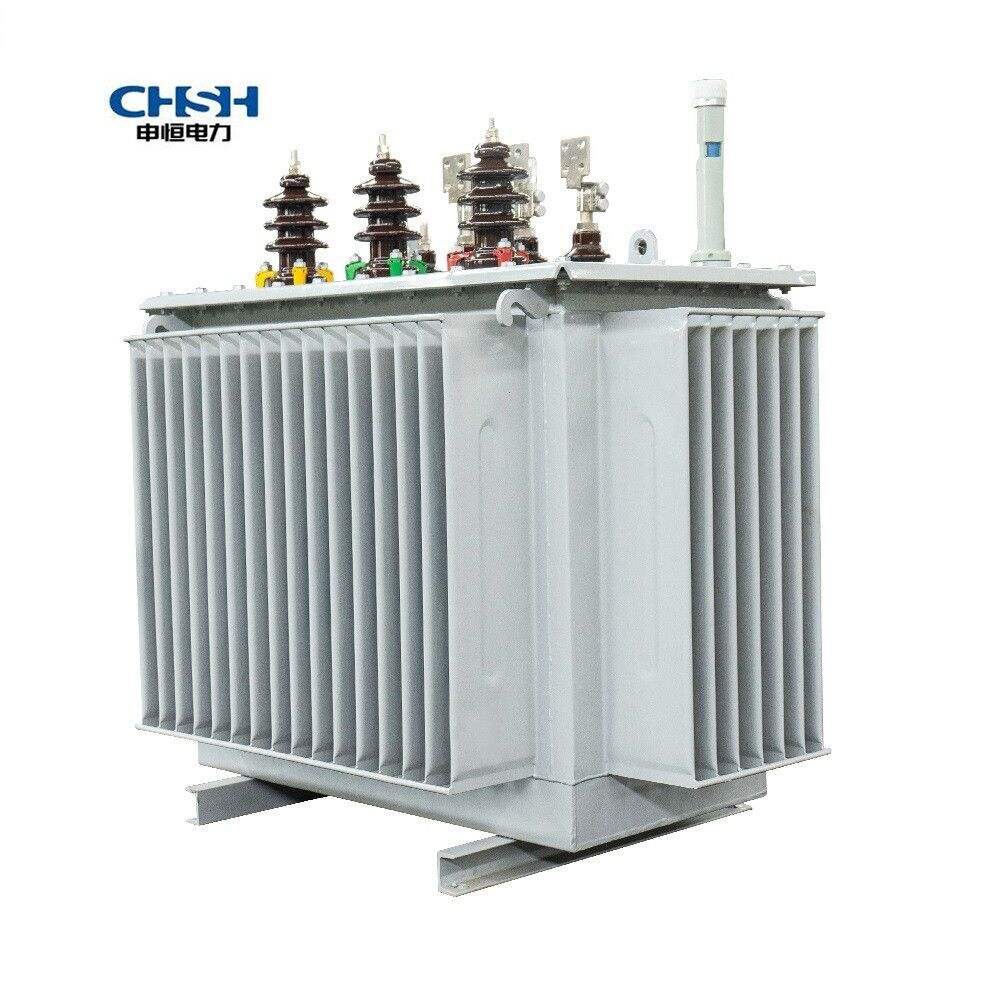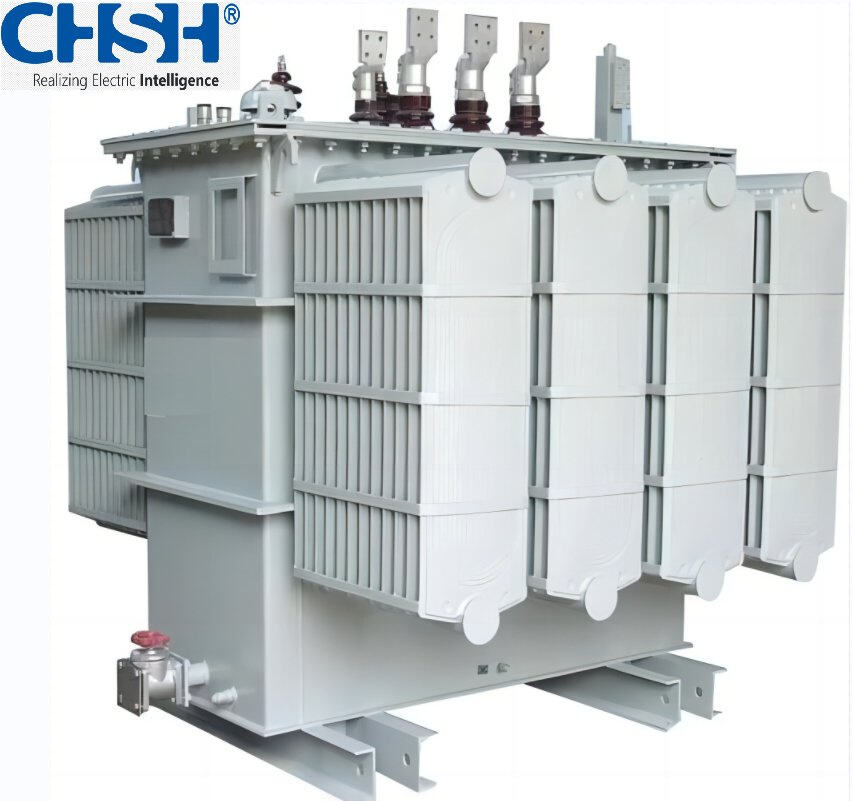Passo a Passo: Instalando Transformadores de Distribuição com Resfriamento a Óleo em Ambientes Urbanos
Resfriamento a óleo Transformadores de distribuição desempenham um papel fundamental na garantia de um fluxo estável e eficiente de eletricidade das redes de utilidade para usuários residenciais, comerciais e industriais. Em ambientes urbanos densamente povoados, esses transformadores devem ser instalados com precisão, atendendo tanto aos requisitos de desempenho quanto às rigorosas normas de segurança.
Como o óleo é utilizado tanto como meio de refrigeração quanto como isolante, esses transformadores possuem excelente desempenho térmico e durabilidade. No entanto, sua instalação em áreas urbanas apresenta desafios únicos — espaço limitado, códigos de construção rigorosos, exigências de segurança ambiental e a necessidade de minimizar interrupções no serviço.
Este guia passo a passo explica o processo de instalação de Transformadores de Distribuição Resfriados a Óleo Transformadores de distribuição em ambientes urbanos, detalhando o planejamento, preparação do local, procedimentos de instalação, testes e comissionamento final.
Compreendendo os Transformadores de Distribuição Resfriados a Óleo
Transformadores de Distribuição Resfriados a Óleo utilizam óleo mineral ou óleo isolante sintético para dissipar o calor das bobinas e núcleo do transformador. O óleo circula naturalmente (sistemas ONAN) ou com resfriamento forçado (sistemas ONAF), transferindo o calor para as paredes do tanque do transformador ou para radiadores, onde é liberado no ar.
Esses transformadores são preferidos em muitas aplicações porque eles:
Gerenciam alta capacidade de carga de forma eficiente.
Têm uma vida útil mais longa em comparação com transformadores do tipo seco.
Operam com confiabilidade sob condições de alta demanda.
Oferecem refrigeração eficaz mesmo em climas quentes.
Em ambientes urbanos, seu design robusto os torna ideais para alimentar distritos comerciais, condomínios residenciais e empreendimentos mistos.
Passo 1: Planejamento e Conformidade Regulatória
Antes de qualquer instalação começar, uma fase detalhada de planejamento é essencial.
Levantamento Topográfico e Avaliação de Viabilidade
Avalie os requisitos de carga da área para determinar a capacidade do transformador.
Avalie o espaço disponível, considerando o tamanho do transformador, os requisitos de folga e as necessidades de ventilação.
Revise a proximidade com outras instalações, estradas e estruturas.
Conformidade com Regulamentações Locais
Obtenha as licenças necessárias das autoridades municipais e dos reguladores de serviços públicos.
Certifique-se de que o transformador atenda aos padrões de segurança contra incêndios, ambientais e de controle de ruído.
Planeje medidas de contenção de óleo para cumprir as regulamentações de prevenção de vazamentos.
Coordenação com as Partes Interessadas
Coordene com empresas de utilidade pública, empreiteiros e autoridades locais para planejar os cronogramas de instalação e minimizar interrupções de energia.
Informe moradores e empresas próximas sobre quaisquer interrupções temporárias ou atividades de construção.

Passo 2: Preparação do Local
Instalações de transformadores urbanos frequentemente enfrentam acesso restrito, portanto, uma preparação adequada garante operações suaves.
Terraplanagem e Fundação
Construa uma fundação ou base de concreto resistente o suficiente para suportar o peso do transformador.
Garanta que a base esteja nivelada e capaz de suportar vibrações.
Projete a fundação para acomodar fossas de contenção de óleo ou paredes de contenção.
Acessibilidade
Planeje rotas de entrega que possam suportar o tamanho e o peso do transformador.
Garanta que haja espaço adequado para operações com guindaste ou empilhadeira.
Medidas de Segurança
Instale barreiras ou cercas temporárias ao redor do local da instalação.
Prepare extintores de incêndio, kits para contenção de vazamentos e sinalização de segurança.
Passo 3: Entrega e Posicionamento do Transformador
O transporte de Transformadores de Distribuição Resfriados a Óleo para um ambiente urbano pode ser desafiador devido a ruas estreitas e congestionamento.
Logística de entrega
Utilize veículos de transporte especializados para movimentar o transformador.
Planeje as entregas para ocorrerem em horários de menor movimento para minimizar a perturbação.
Utilize veículos de escolta, se exigido por regulamentações locais.
Posicionamento
Use guindastes ou empilhadeiras para posicionar cuidadosamente o transformador sobre a base preparada.
Verifique o alinhamento correto com as conexões elétricas e componentes de refrigeração.
Confirme que o transformador está estável e nivelado antes de prosseguir.
Passo 4: Conexões Elétricas e Mecânicas
Após a instalação do transformador, tem início a instalação elétrica e mecânica.
Conexões de Alta e Baixa Tensão
Conecte o transformador às linhas de entrada de alta tensão e aos circuitos de saída de baixa tensão.
Verifique o torque adequado e fixe todas as terminações.
Instale os para-raios para proteção contra picos de tensão.
Colocação em terra
Conecte o transformador a um sistema de aterramento confiável, garantindo segurança operacional e conformidade com as normas.
Configuração do sistema de arrefecimento
Acople os radiadores ou aletas de resfriamento, caso tenham sido enviados separadamente.
Instale ventiladores ou bombas de resfriamento para sistemas de refrigeração forçada.
Encha o tanque do transformador com óleo isolante, caso ainda não esteja preenchido.
Passo 5: Manipulação do Óleo e Considerações de Segurança
O óleo é um componente essencial em Transformadores de Distribuição Resfriados a Óleo, mas deve ser manipulado com segurança.
Verificações da Qualidade do Óleo
Teste o óleo quanto à rigidez dielétrica, teor de umidade e contaminantes antes do enchimento.
Utilize somente óleo para transformador aprovado e que atenda aos padrões da indústria.
Prevenção e Contenção de Vazamentos
Instale paredes de contenção ou poços capazes de conter todo o volume de óleo do transformador.
Utilize materiais absorventes nas áreas de contenção para gerenciar pequenos vazamentos.
Proteção contra incêndio
Mantenha extintores de incêndio adequados para incêndios elétricos e a óleo nas proximidades.
Considere integrar sistemas de supressão de incêndio em instalações internas ou fechadas.
Etapa 6: Testes e Colocação em Operação
Antes de energizar o transformador, testes completos garantem que ele opere de forma confiável e segura.
Teste Elétrico
Realize testes de resistência de isolamento nas bobinas.
Conduza testes de relação de espiras para verificar as conexões corretas das bobinas.
Realize testes de fator de potência para avaliar a condição do isolamento.
Teste de Óleo
Verifique os sensores e alarmes de temperatura do óleo.
Verifique a circulação do óleo por meio de convecção natural ou bombas.
Ensaios funcionais
Teste os ventiladores e bombas de resfriamento (se aplicável).
Verifique toda a fiação de controle e os relés de proteção.
Após todos os testes aprovados, o transformador pode ser energizado em condições controladas.
Passo 7: Inspeção Final e Entrega
Após a comissionamento, a equipe de instalação deve realizar uma inspeção final e entregar o sistema à equipe de operação ou de gerenciamento da instalação.
Documentação
Forneça manuais de operação e manutenção.
Inclua desenhos as-built e diagramas elétricos.
Registre os resultados iniciais dos testes para referência futura.
Formação
Capacite a equipe sobre operação segura, manutenção rotineira e procedimentos de emergência.
Plano de Manutenção Programada
Estabeleça intervalos de inspeção para qualidade do óleo, desempenho do sistema de refrigeração e integridade elétrica.
Considerações Especiais para Instalações Urbanas
Ambientes urbanos exigem precauções adicionais ao instalar Transformadores de Distribuição Resfriados a Óleo:
Controle de Ruído : Instale invólucros ou barreiras acústicas em áreas sensíveis ao ruído.
Design estético : Utilize carcaças decorativas ou pintura para integrar o transformador ao ambiente.
Otimização de Espaço : Utilize designs compactos de transformadores em locais com espaço limitado.
Gestão do tráfego : Coordene com as autoridades locais para fechamento de ruas ou desvio de tráfego durante a instalação.
Segurança e conformidade ambiental
Como as áreas urbanas são densamente povoadas, a segurança e o cumprimento de normas ambientais são críticos:
Evite vazamentos de óleo por meio de sistemas de contenção robustos.
Proteja contra vandalismo com invólucros seguros.
Minimize interferência eletromagnética em áreas sensíveis, como hospitais ou escolas.
O Papel da Tecnologia Moderna na Instalação
Avanços recentes tornam a instalação de Transformadores de Distribuição Resfriados a Óleo mais eficiente:
Sensores Inteligentes : Monitore em tempo real a temperatura, pressão e carga do óleo.
Monitoramento Remoto : Permita que os operadores detectem problemas precocemente e reduzam o tempo de inatividade.
Óleos Ecologicamente Corretos : Utilize óleos isolantes à base de ésteres biodegradáveis para áreas ambientalmente sensíveis.
Conclusão
A instalação de transformadores de distribuição refrigerados a óleo em ambientes urbanos é um processo complexo que requer planejamento cuidadoso, conformidade regulatória e execução precisa. Desde levantamentos topográficos e preparação da fundação até conexões elétricas, manuseio do óleo e colocação em operação, cada etapa deve ser realizada com segurança, confiabilidade e eficiência em mente.
As instalações urbanas apresentam desafios como espaço limitado, limites rigorosos de ruído e preocupações ambientais. No entanto, ao adotar as melhores práticas — incluindo adequada preparação do local, manuseio cuidadoso do óleo e testes rigorosos — esses desafios podem ser superados com sucesso.
Avanços em monitoramento, materiais ecológicos e designs compactos tornam possível instalar transformadores de alta capacidade em ambientes urbanos densos, sem comprometer o desempenho. Com a abordagem correta, Transformadores de Distribuição Resfriados a Óleo podem operar com eficiência por décadas, fornecendo energia confiável às comunidades urbanas que dependem deles.
Perguntas Frequentes
Por que escolher Transformadores de Distribuição Resfriados a Óleo em vez de transformadores a seco em áreas urbanas?
Eles oferecem maior capacidade de carga, melhor eficiência de resfriamento e maior vida útil em aplicações exigentes.
Como o óleo do transformador é testado antes da instalação?
Ele é verificado quanto à rigidez dielétrica, teor de umidade e contaminação para garantir uma operação segura.
Transformadores de Distribuição Resfriados a Óleo podem ser instalados em ambientes fechados?
Sim, mas exigem ventilação adequada, contenção do óleo e medidas de segurança contra incêndio.
Com que frequência o óleo do transformador deve ser substituído?
Com boa manutenção, o óleo de transformador pode durar muitos anos, mas testes periódicos determinarão se a substituição é necessária.
Qual é a vida útil média de um Transformador de Distribuição resfriado a óleo?
Normalmente de 25 a 35 anos, dependendo das condições de carga, manutenção e fatores ambientais.
Sumário
- Passo a Passo: Instalando Transformadores de Distribuição com Resfriamento a Óleo em Ambientes Urbanos
- Compreendendo os Transformadores de Distribuição Resfriados a Óleo
- Passo 1: Planejamento e Conformidade Regulatória
- Passo 2: Preparação do Local
- Passo 3: Entrega e Posicionamento do Transformador
- Passo 4: Conexões Elétricas e Mecânicas
- Passo 5: Manipulação do Óleo e Considerações de Segurança
- Etapa 6: Testes e Colocação em Operação
- Passo 7: Inspeção Final e Entrega
- Considerações Especiais para Instalações Urbanas
- Segurança e conformidade ambiental
- O Papel da Tecnologia Moderna na Instalação
- Conclusão
-
Perguntas Frequentes
- Por que escolher Transformadores de Distribuição Resfriados a Óleo em vez de transformadores a seco em áreas urbanas?
- Como o óleo do transformador é testado antes da instalação?
- Transformadores de Distribuição Resfriados a Óleo podem ser instalados em ambientes fechados?
- Com que frequência o óleo do transformador deve ser substituído?
- Qual é a vida útil média de um Transformador de Distribuição resfriado a óleo?

